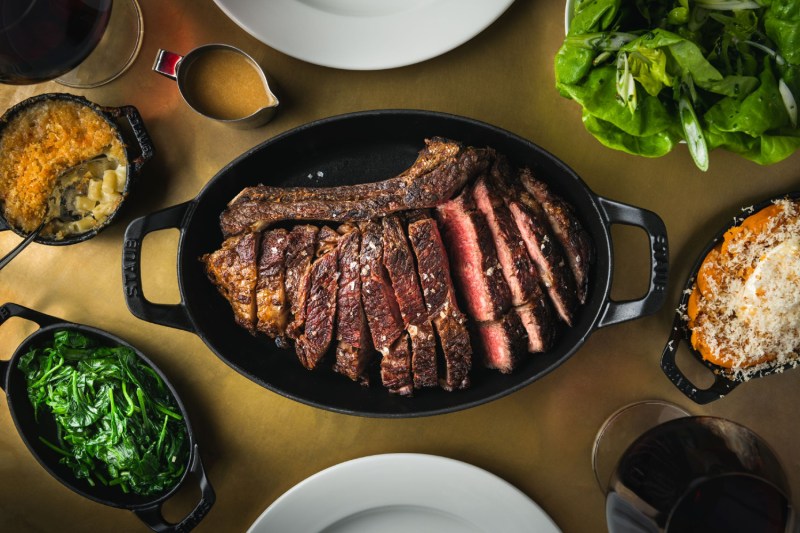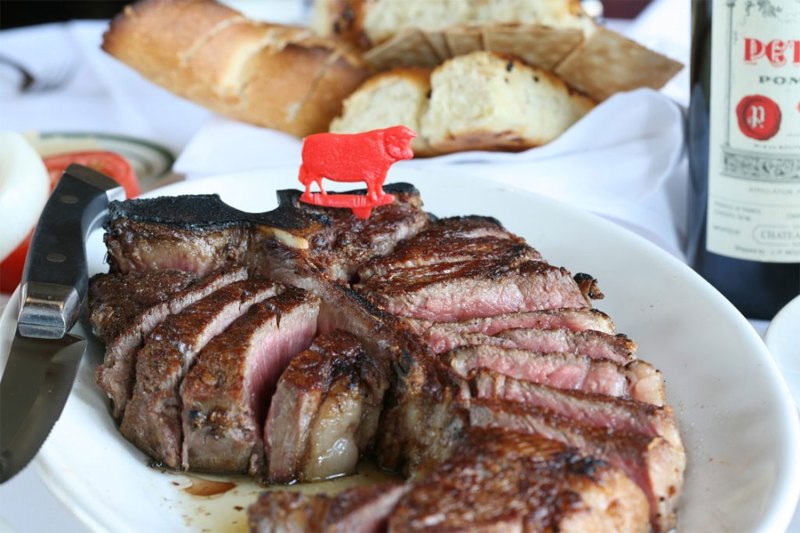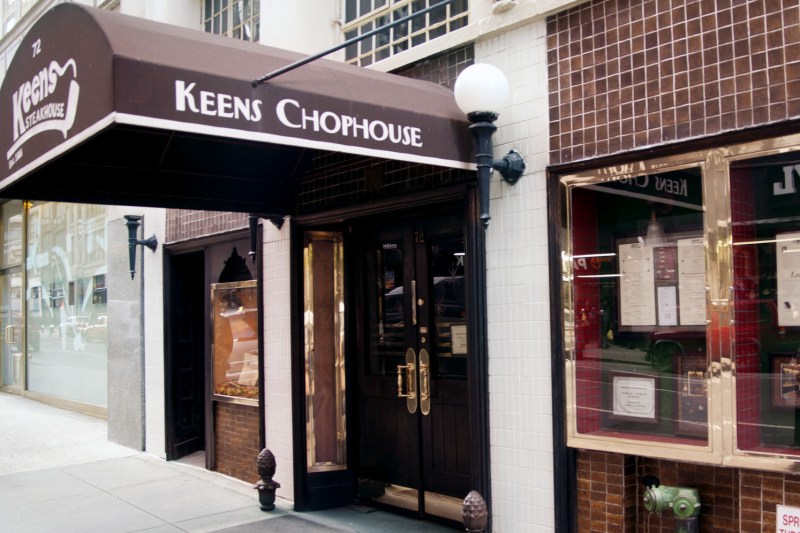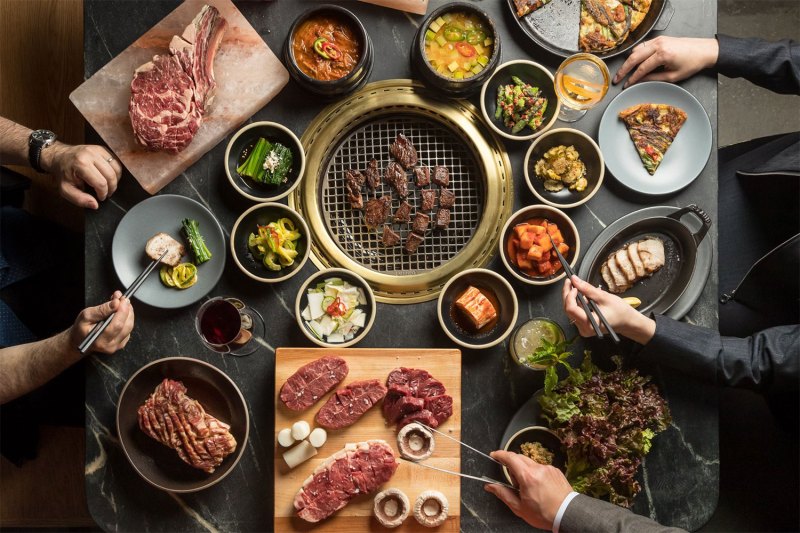The New York Times’ restaurant critic, Pete Wells, has a (very well-deserved) reputation as a discerning tastemaker who isn’t afraid to express his honest opinions, whether good or bad. As a result, he’s been responsible for a small but significant number of total takedowns of high-profile restaurants (his epic slaughter of Guy Fieri’s now-defunct Guy’s American Kitchen & Bar quite frankly deserved a Pulitzer). Wells had added another famous spot to his less-than-illustrious list: Peter Luger, an iconic Brooklyn steakhouse with a 100-plus year history and notoriously lofty prices.
When Wells dropped Peter Luger’s “star” rating (a major prestige point for NYC restaurants) from 2 stars to 0 stars, he encountered plenty of differently minded New Yorkers who were appalled by his drastic devaluation of this legendary city eatery. But here’s the thing: Wells is right. Peter Luger is far from disastrous, but its steaks don’t qualify as exceptional, its side dishes prove even more lackluster, and the overall service standard simply doesn’t pass muster.
That said, NYC still contains plenty of destination-worthy steakhouses, where you can find a better-crafted red meat repast (and in many cases, at a lower cost than Peter Luger prices). Here, we’re recommending 11 steakhouses in NY that specialize in the famed meat and really know what they’re doing.
Hawksmoor

The original Hawksmoor launched in London. Since, the British steakhouse has set up shop in NYC, and it’s well worth your time if animal proteins are your calling. In addition to a great cocktail program and popular Sunday roasts, Hawksmoor offers incredible charcoal-grilled steaks, plenty of surf and turf scenarios, and great mains like cast-iron filet steak or veal chop with fried oysters. This place is proof that English-inspired food is underrated and there are great meat purveyors in the northeast, from which the restaurant sources much of its protein.
Strip House

Located on 44th Street, Strip House delivers an unforgettable steakhouse experience in the heart of the city. Known for its sultry red interiors and walls adorned with vintage Studio Manasse prints of 1930s burlesque stars, the restaurant offers an atmosphere as indulgent as the menu.
Voted one of NYC’s best steakhouses by Zagat and awarded four stars by Forbes, Strip House is famed for its perfectly charred prime cuts and decadent sides. Regulars rave about the seafood towers, or “plateau,” on the menu, and the filet with blue cheese crust, a favorite of Eric Hrubant, Founder and CEO of CIRE Travel, a concierge-style travel agency based in New York City. “I’m a born and raised New Yorker and I now split my time between Manhattan and Kennebunkport, Maine,” Hrubant said. “Whenever I’m craving a great steak, my all-time favorite is the Strip House in Midtown.”
Bowery Meat Company

Undoubtedly, the atmosphere is part of the steakhouse experience and in that Bowery Meat Company is a true triumph. With retro charm in every direction, the decor is as good as what comes out on the plate. There are noteworthy steaks for two, intriguing Wagyu cuts, and mouthwatering sides like shishito peppers, roasted forest mushrooms, and hash browns that enhance the meats. Look out for the extended dry-aged Tomahawk and the prime bone-in rib steak.
Quality Meats

Since opening in 2006, Quality Meats has redefined the steakhouse experience in Midtown Manhattan. Founded by Michael Stillman, son of Smith & Wollensky creator Alan Stillman, it blends traditional steakhouse excellence with a sleek, industrial design by AvroKO. Exposed concrete, raw ceilings, and Edison bulbs brought downtown aesthetic uptown, making it an instant NYC hotspot.
Nearly two decades later, Quality Meats remains a staple of the city’s dining scene, celebrated for its locally sourced meats and inventive takes on American favorites. Menu highlights include the signature bacon appetizer, tomahawk steak, caviar sliders, lobster toast, and Mediterranean Branzino. Don’t miss the indulgent tableside truffle butter service for an added touch of luxury. CIRE Travel CEO Eric Hrubant lists Quality Meats among his favorites: “Their bacon appetizer is to die for! Then I usually get their tomahawk steak to share.” A visit here guarantees a dining experience that’s quintessentially New York.
Wolfgang’s Steakhouse

Sometimes, the student truly does outpace the teacher. In the case of Wolfgang’s Steakhouse vs. Peter Luger, that maxim proves remarkably true. Founded in the early aughts by former Peter Luger head waiter Wolfgang Zwiener, Wolfgang’s Steakhouse now boasts almost 20 worldwide locations, but its flagship remains on Park Avenue in NYC and is one of the best steakhouses in NY.
Wolfgang’s specializes in the same old-school steakhouse traditions that draw visitors to Peter Luger, but its hospitality quotient vastly overpowers that of Luger, and the meat quality proves consistently equivalent (if not superior). Additionally, you can enjoy Peter Luger quality without the Peter Luger prices.
Keens Steakhouse

Peter Luger devotees speak equally highly of the restaurant’s tender steaks and its classic, turn-of-the-century aesthetic. For a steakhouse that delivers on both fronts, head to Keens Steakhouse in midtown Manhattan. Established in 1885, Keens rocks a charmingly vintage aesthetic, with wood-paneled walls, framed portraits, and crisp white tablecloths.
The steaks here are, like Peter Luger’s steaks, expensive, but Keens’ prime rib, porterhouse, and specialty mutton chop justify the high price tags. If you want a traditional NYC steak dinner experience (i.e., if you want to feel like Don Draper or Roger Sterling while enjoying a great meal), Keens is the spot for you.
Cote

American-style steakhouses aren’t the only option for a hearty beef-based feast in NYC; at the wildly popular Cote in Chelsea, guests can order prime cuts of steak prepped in the Korean barbecue tradition. The carnivorous favorite at Cote is the Butcher’s Feast, a prix-fixe meal featuring four cuts of USDA Prime and American Wagyu beef, along with an assortment of banchan and other accompaniments.
Colonia Verde

Colonia Verde’s quaint Fort Greene, Brooklyn locale (in the back building of a picturesque brownstone) and lively pan-Latin menu make it a true local hit, and steak lovers find this spot especially accommodating to their gustatory needs. The dinner menu includes an entire steak section, with dishes like a bone-in chef’s ribeye, picanha served with toasted cassava, and skirt steak.
Gallaghers

Gallaghers is the kind of classic glitzy steakhouse that attracts celebrities and pro athletes. The place has been at it for almost a century and engineers a mean steak to accompany its woodsy interior, green booths, and white tablecloths. The meats are always on display in the window and the service is stellar. Vintage steakhouses like this produce vintage options, like tartare, carpaccio, New York sirloin, and lobster tail with filet mignon.
Porter House

Aptly named, Porter House is the brainchild of chef and owner Michael Lomonaco, who opened the place back in 2006. The feel is decidedly contemporary, the wine program is lauded, and the steak selection is fantastic. Try the chili-rubbed boneless ribeye or splurge for the deftly cooked porterhouse. The roast prime rib au jus is done every Tuesday and Thursday and is worth signing up for and the desserts are not to be missed. You get amazing food, remarkable views, and one of the prettiest bars in NYC. Top to bottom, it’s a standout steakhouse.
Le Marais

An eclectic eatery, Le Marais is a French steakhouse that’s kosher and launched by European immigrants, providing high-quality steaks without the steep Peter Luger prices. There’s a little of this and that, from grass-fed Uruguayan beef to prime rib and hangar steak with shallot sauce. The steaks come with pommes frites, there are Moroccan sausages served with couscous, and the house-made rillettes are worth their weight in gold.
What is the best cut of meat to have at a steakhouse?

Not sure what to order at one of these steakhouses? Here are some of the most popular and delicious cuts of steak you will most likely find on the menu.
Filet mignon
This cut is known for its tenderness and buttery texture. It comes from the tenderloin, a small muscle that doesn’t get much exercise. Because of this, it’s very lean and doesn’t have a lot of flavor on its own. Filet mignon is typically served with a sauce or butter to add some extra flavor.
Ribeye
Ribeye steaks are known for their rich flavor and marbling. The marbling is fat that runs throughout the meat, which adds flavor and juiciness. Ribeye steaks are cut from the rib section of the cow, which is a well-exercised muscle. This means that ribeye steaks can be a bit tougher than filet mignon, but the extra flavor is worth it for many people.
New York strip
New York strip steaks are a good balance between tenderness and flavor. They’re cut from the short loin, which is a well-exercised muscle. This means that they’re not as tender as filet mignon, but they have more flavor than ribeye. New York strip steaks are also typically less expensive than other cuts of steak.
T-bone
T-bone steaks are a classic steakhouse cut. They’re essentially two steaks in one: a filet mignon on one side of the bone and a New York strip on the other side. This means you get to enjoy the best of both worlds: the tenderness of the filet mignon and the flavor of the New York strip. T-bone steaks are typically larger and more expensive than other cuts of steak.
Porterhouse
Porterhouse steaks are similar to T-bone steaks, but they’re even larger. The filet mignon portion of a porterhouse steak is much larger than the filet mignon portion of a T-bone steak. This means you get more tender meat for your money. Porterhouse steaks are typically the most expensive cut of steak on the menu.
Speaking of all things meat, check out our guides on how to cook steak in the oven and create perfectly browned steak. If you’re still craving some fine diving, be sure to read our features on the best restaurants in America. Happy eating!



